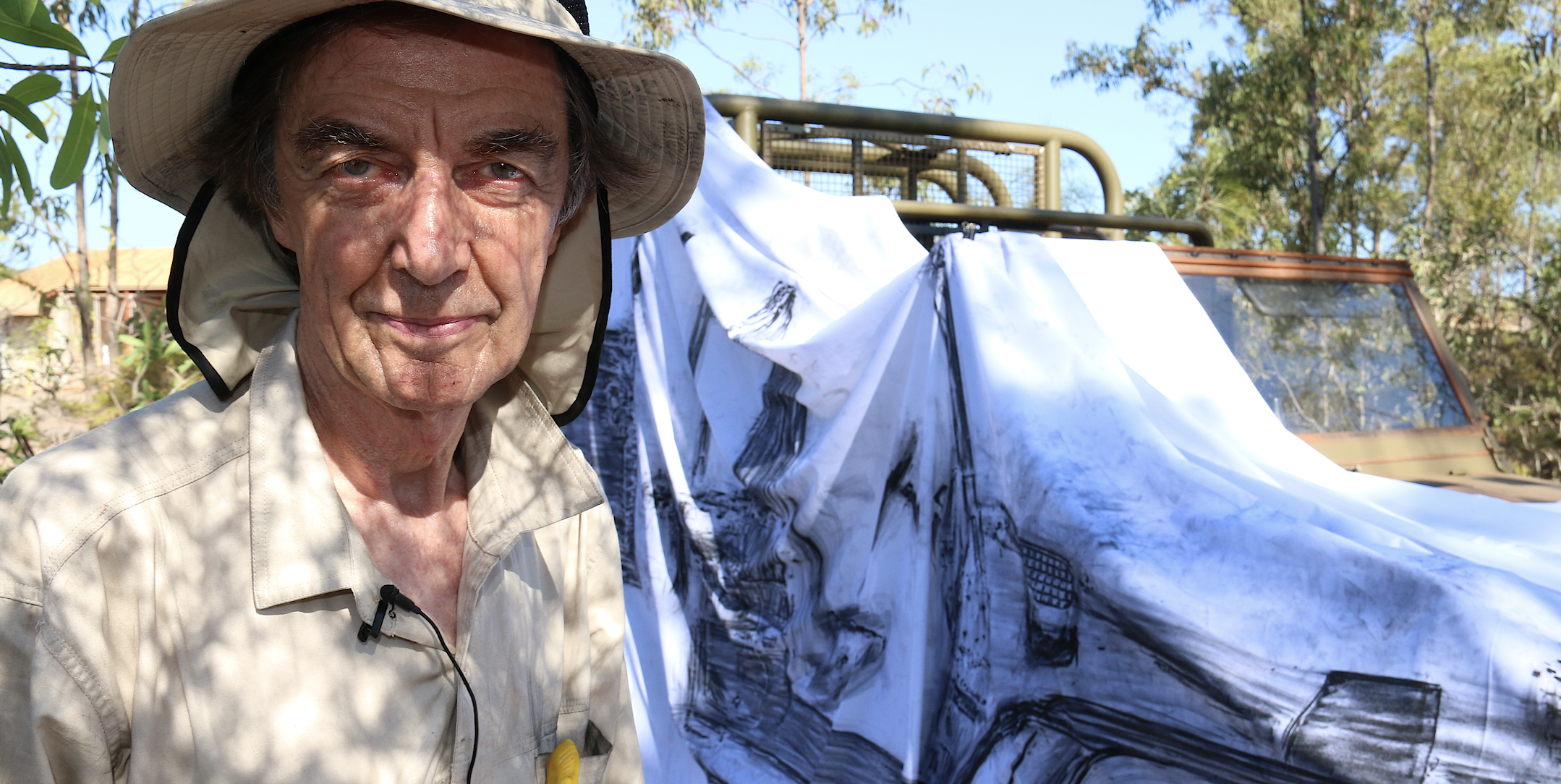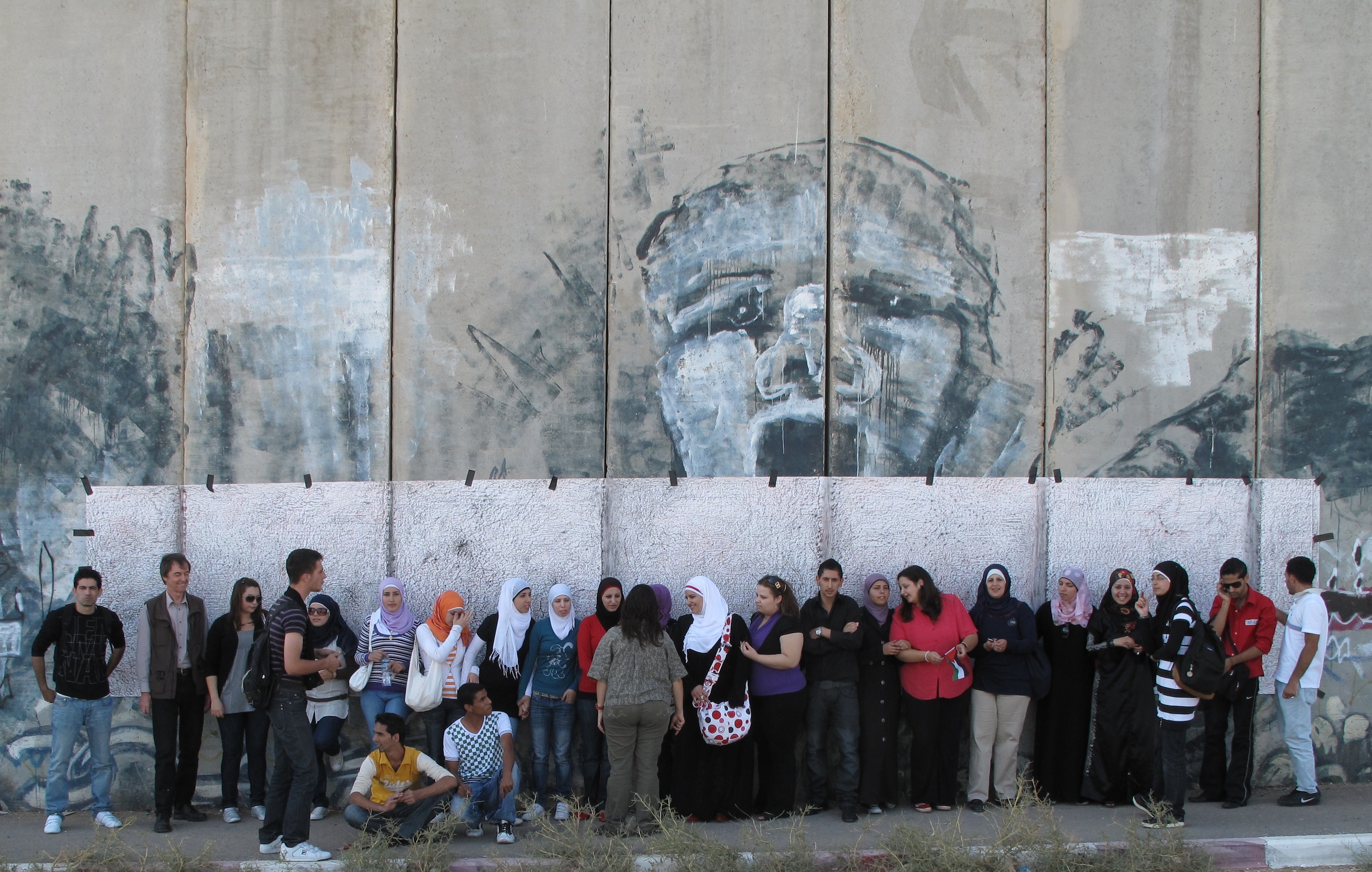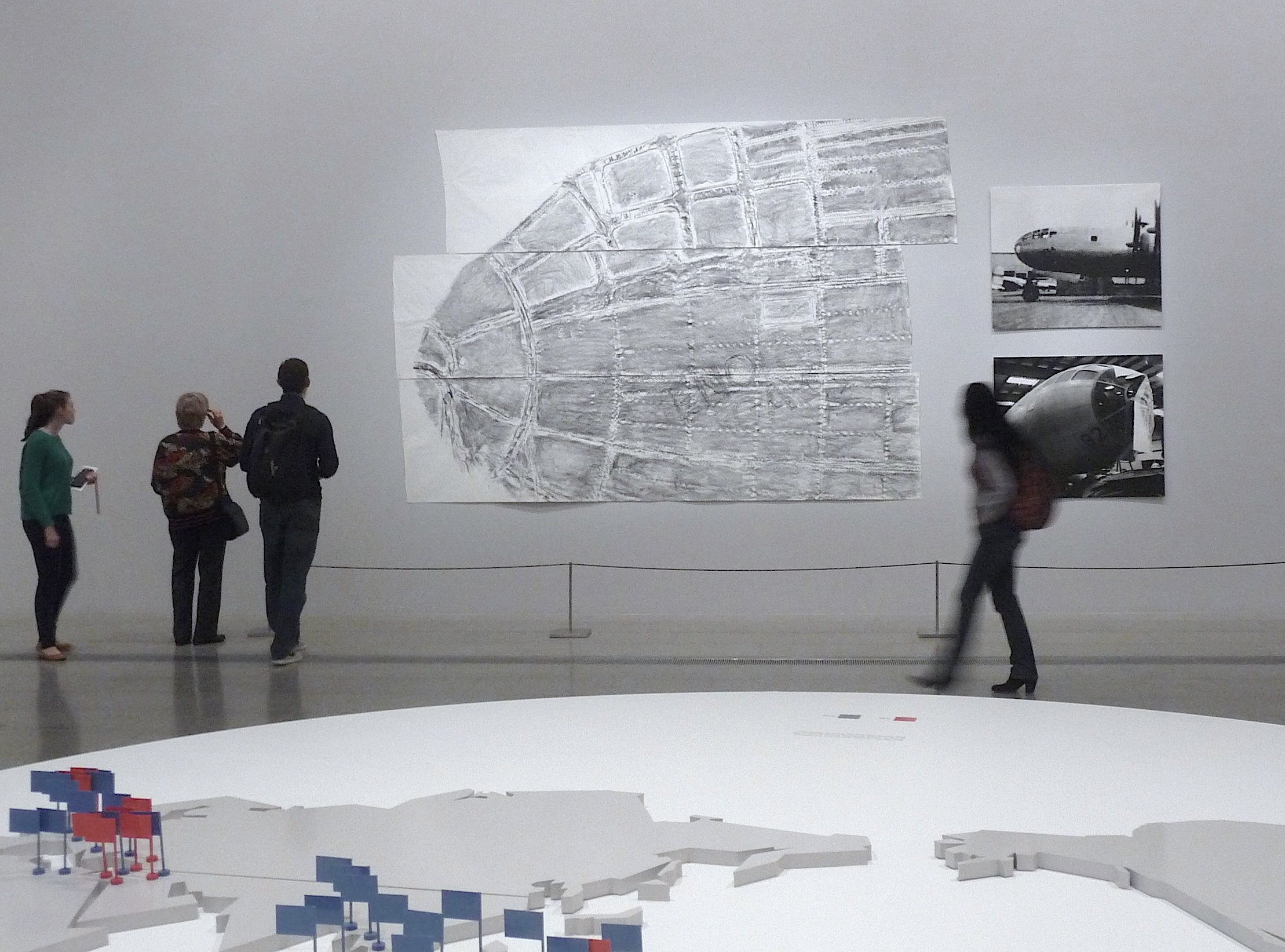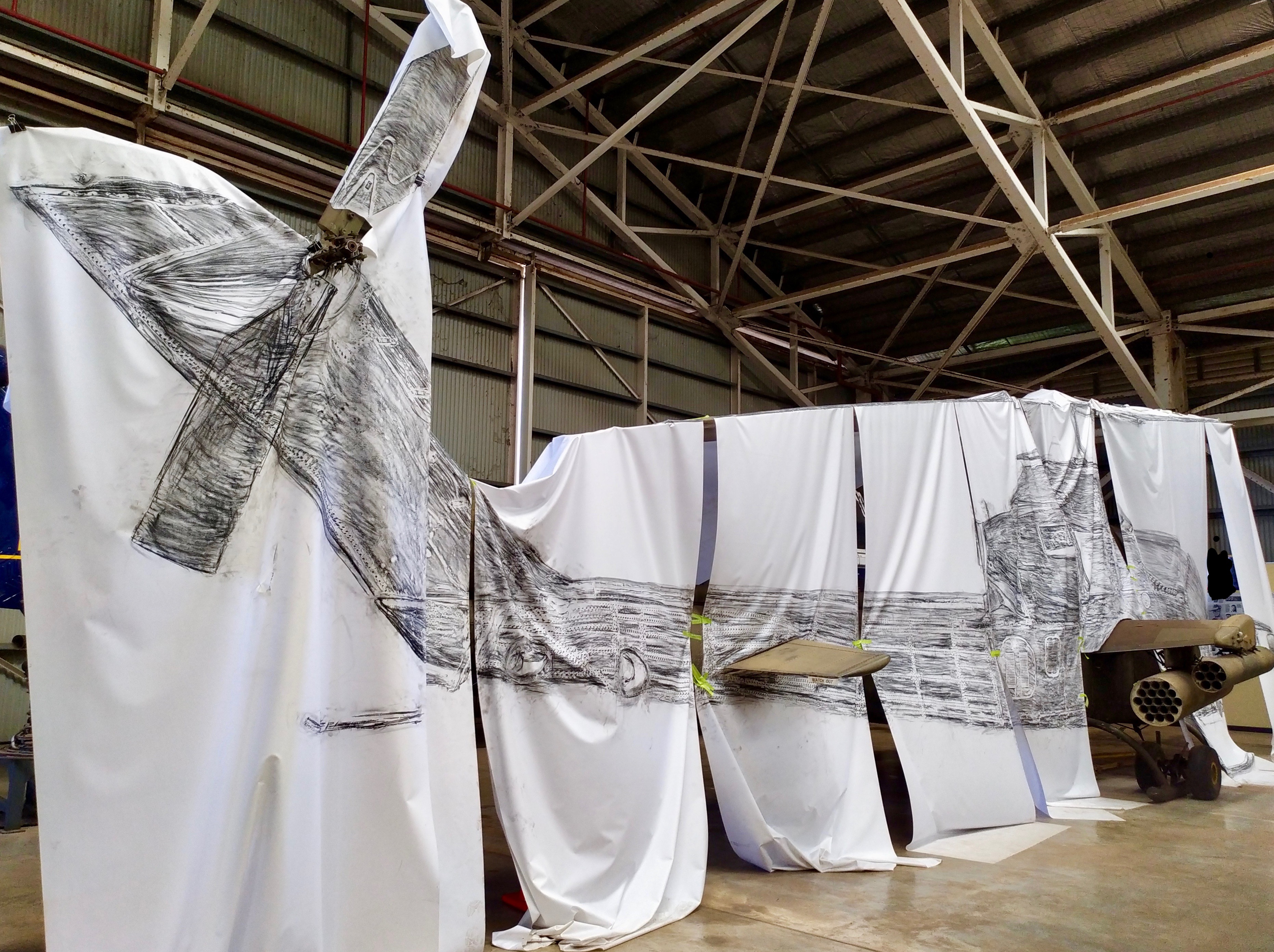
UNSW Art & Design Professor Ian Howard has been fascinated with the rubbing technique since the 1960s, a time also marked by the escalation of the Vietnam War.
Professor Howard uses the technique of rubbing to produce artworks of scale that generate a relationship between civil and military cultures.
His art practice explores sovereign border issues- walls, barriers and the vehicles used in enforcement such as aircraft, tanks and ships using this age-old art technique.
“I remain fascinated by the rubbing process as it accurately transfers the image of an object directly onto a removable surface, a canvas, for others to view and consider” he says.
“The directness of rubbing is intriguing to me. There is an integrity of realism inherent in the process. I'm not interpreting anything, I’m just making a very accurate copy of the object, down to the last stone of a wall or rivet of a jet fighter.”
The former dean of COFA (now UNSW Art & Design) has been using the technique since graduating from art school in 1968. During this period, young men were conscripted to fight in the Vietnam War through the ‘birthday lottery’.
“The reality of being a 20-year-old student at the time was that if your birth date was drawn out of a lottery, you had to enlist to fight. It was serious stuff,” Professor Howard says.
“Paradoxically, the 1960s ushered in abstract, non-objective, non-figurative and minimalist art. On the one hand, the real world was crashing in upon us, and on the other, we were taught to not deal with subject matter or with material reality. This great contradiction was there for all of us to see and deal with.”
Professor Howard’s interest in investigating the relationship between civil and military cultures and documenting its history has meant he has travelled to often highly militarised conflict zones.
He has examined sites including the Berlin Wall, the Walls of Derry during The Troubles period, the China/North Korean rivers border and the Israeli Separation Barrier using the rubbing technique to create works up to 60 meters long.

This technique has been used for thousands of years in Europe and Asia where it was employed as an early form of printing from engraved stelae, he says.
“Importantly for my work, the image is undertaken on location, in real-time and often during the actual operational performance of the vehicle” which gives the works immediacy and authenticity.
One of his most celebrated works was the rubbing of the Enola Gay – the B-29 Superfortress Bomber that dropped the atomic bomb on the city of Hiroshima. This artwork is owned by the Art Gallery of New South Wales and is occasionally loaned out for special exhibitions.

Professor Howard’s recent work has included a Bell AH-1 Cobra helicopter that served in the Vietnam War. The rubbing is of the entire aircraft so the canvas measures 5 metres high by 17 metres wide. Certainly, a challenge to find a gallery large enough to exhibit such a work however Professor Howard quips that “publishing experimental research is never easy”.

In his teaching at UNSW Art & Design, Professor Howard reiterates the importance of understanding “the actual nature of the world” to his students.
“Look and search for the truth about the ‘world’ – the real world, which is often hidden, unknown to us. And if you find it of interest or concern, base your life’s work upon this.
“Art is about identifying the important questions as much as solving specific problems.”
